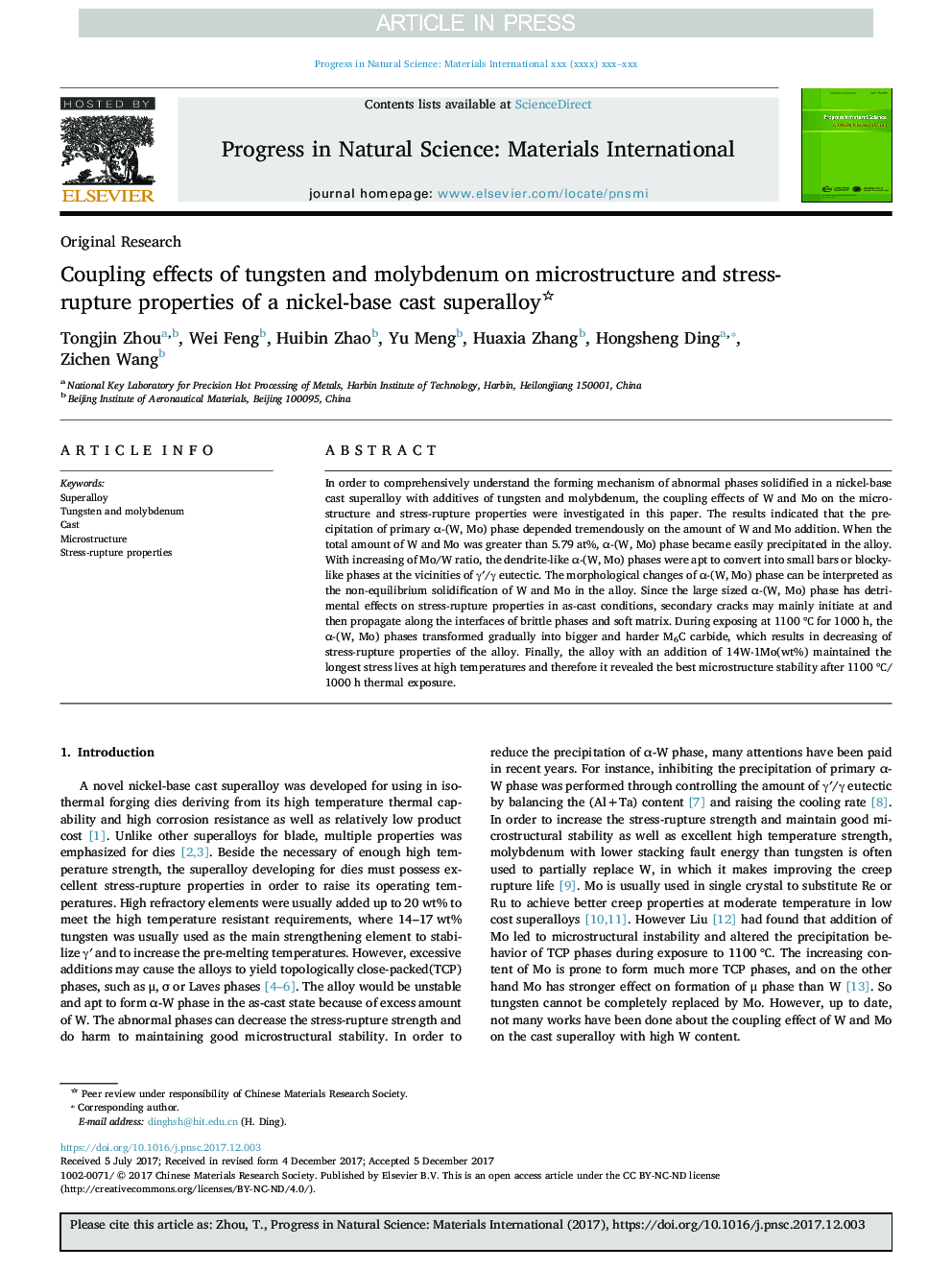| Article ID | Journal | Published Year | Pages | File Type |
|---|---|---|---|---|
| 7934758 | Progress in Natural Science: Materials International | 2018 | 9 Pages |
Abstract
In order to comprehensively understand the forming mechanism of abnormal phases solidified in a nickel-base cast superalloy with additives of tungsten and molybdenum, the coupling effects of W and Mo on the microstructure and stress-rupture properties were investigated in this paper. The results indicated that the precipitation of primary α-(W, Mo) phase depended tremendously on the amount of W and Mo addition. When the total amount of W and Mo was greater than 5.79â¯at%, α-(W, Mo) phase became easily precipitated in the alloy. With increasing of Mo/W ratio, the dendrite-like α-(W, Mo) phases were apt to convert into small bars or blocky-like phases at the vicinities of γâ²/γ eutectic. The morphological changes of α-(W, Mo) phase can be interpreted as the non-equilibrium solidification of W and Mo in the alloy. Since the large sized α-(W, Mo) phase has detrimental effects on stress-rupture properties in as-cast conditions, secondary cracks may mainly initiate at and then propagate along the interfaces of brittle phases and soft matrix. During exposing at 1100â¯â for 1000â¯h, the α-(W, Mo) phases transformed gradually into bigger and harder M6C carbide, which results in decreasing of stress-rupture properties of the alloy. Finally, the alloy with an addition of 14W-1Mo(wt%) maintained the longest stress lives at high temperatures and therefore it revealed the best microstructure stability after 1100â¯â/1000â¯h thermal exposure.
Keywords
Related Topics
Physical Sciences and Engineering
Materials Science
Electronic, Optical and Magnetic Materials
Authors
Tongjin Zhou, Wei Feng, Huibin Zhao, Yu Meng, Huaxia Zhang, Hongsheng Ding, Zichen Wang,
